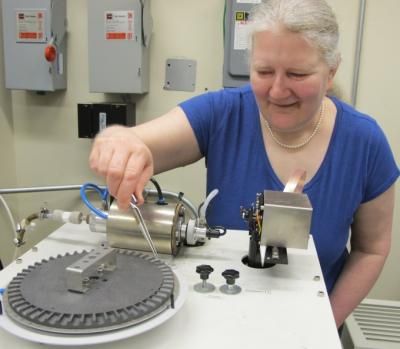Caught by a hair
Crime fighters could have a new tool at their disposal
Dr. Beauchemin and student Lily Huang have developed a cutting-edge technique to identify human hair. Their test is quicker than DNA analysis techniques currently used by law enforcement. Early sample testing at Queen's produced a 100 per cent success rate.

Diane Beauchemin works in her lab at Queen's analyzing hair samples.
Queen's University
"My first paper and foray into forensic chemistry was developing a method of identifying paint that could help solve hit and run cases," explains Dr. Beauchemin. "Last year, Lily wanted to research hair analysis, so I started working in that area."
Blood samples are often used to identify gender and ethnicity, but blood can deteriorate quickly and can easily be contaminated. Hair, on the other hand, is very stable. Elements in hair originate from sweat secretions that alter with diet, ethnicity, gender, the environment and working conditions.
Dr. Beauchemin's process takes 85 seconds to complete and involves grinding up the hair, burning it and then analyzing the vapour that is produced.
"Our analysis process is very robust and can be used universally," says Ms. Huang. "One of our samples even included dyed hair and the test was 100 per cent accurate. The test was able to distinguish East Asians, Caucasians and South Asians."
Dr. Beauchemin says she has contacted law enforcement agencies about using the new technology. She is also planning to collect more hair samples and continue her research with a goal of pinpointing where exactly in the world the hair sample is from, to look for more ethnicities and determine specific age.
Other news from the department science

Get the life science industry in your inbox
By submitting this form you agree that LUMITOS AG will send you the newsletter(s) selected above by email. Your data will not be passed on to third parties. Your data will be stored and processed in accordance with our data protection regulations. LUMITOS may contact you by email for the purpose of advertising or market and opinion surveys. You can revoke your consent at any time without giving reasons to LUMITOS AG, Ernst-Augustin-Str. 2, 12489 Berlin, Germany or by e-mail at revoke@lumitos.com with effect for the future. In addition, each email contains a link to unsubscribe from the corresponding newsletter.



















































